In Conversation With Anant Badjatya, CEO, Sun Mobility On Partnership With DMRC
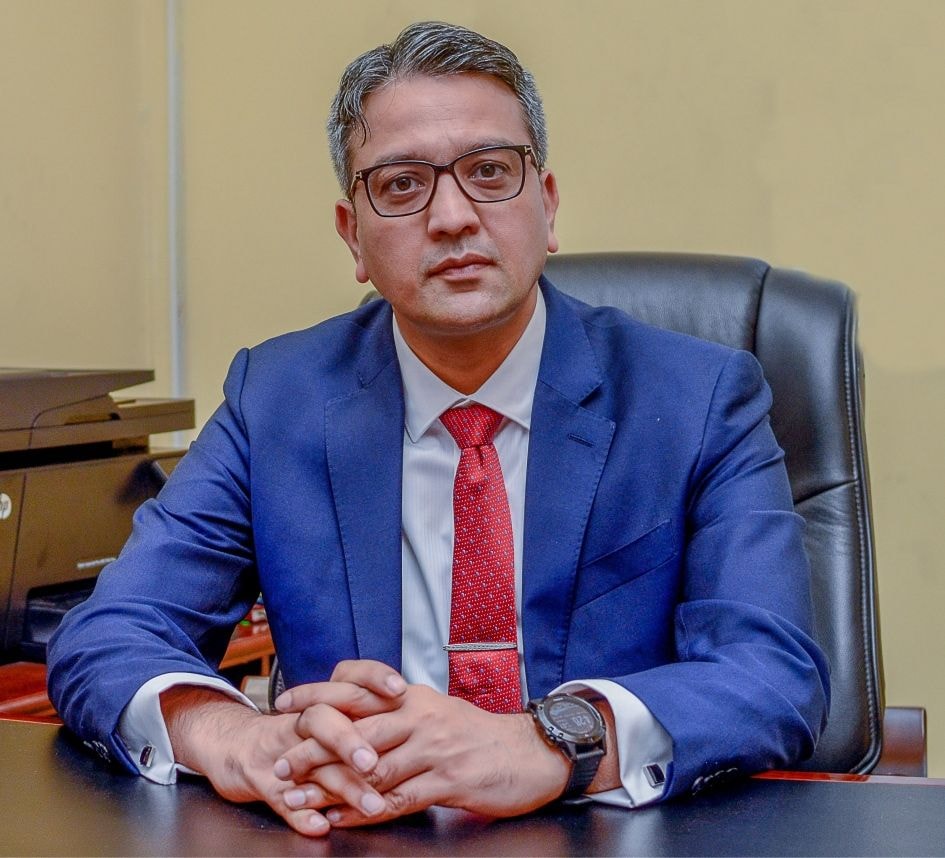
- carandbike discusses last mile electrification and battery swapping with Sun Mobility CEO
- Battery swapping is the next big thing in electrification
- India very well poised to adopt greener means of mobility
Anant Badjatya is a man of action! He heads Sun Mobility and is an active proponent of electrification of last mile commuting and has a broad perspective of what needs to change in order for India to adapt to electrification as quickly as possible. Team carandbike has a tete-a-tete with him and understands the rationale behind Sun Mobility’s partnership with Delhi Metro Rail Corporation (DMRC), future plans of the company, its battery swapping technology and quick adoption of green means of transport.
Also Read: Delhi Metro & Sun Mobility Flag Off Electric Auto Fleet In Dwarka, Delhi
CNB: Could you tell us more about SUN Mobility’s partnership with DMRC?
Anant Badjatya (AB): Sure. We have come together, DMRC, Delhi Government and SUN Mobility in a PPP model wherein DMRC and SUN Mobility will own the vehicle. We are deploying these vehicles as Mobility as a Service (MaaS), starting from Dwarka.
We have deployed 50 battery-swappable electric autos recently. The total number will increase to 136 in Dwarka. We will then follow it shortly with other places like Rohini or Shakurpur metro stations in a month's time. Delhi government had issued permits for 4,300 e-autos, out of which DMRC has given 700 or 800 odd e-autos to female drivers. Out of these 700 odd permits that DMRC received from Delhi government, they invited and sought partnerships with players and wherein we successfully discussed with them.
This is the first time that the Delhi government has granted corporate ownership to autos in Delhi. Till now, it was possible to get permits for autos in Delhi, but no corporates can own autos in Delhi. Delhi government worked very hard behind the scenes to change the system in the RTO to enable registration of vehicles in SUN Mobility’s name. When these 4,200 odd permits were released, the uptake was not as it was desired. But now, all of us have realized that corporate ownership will help a long way as it helps in financing and quick uptake.
CNB: With regards to the autos in question, does SUN Mobility manufacture autos or are they from another OEM in a partnership?
AB: SUN Mobility’s autos that we deployed are from OEMs. The ones that are deployed today are from Piaggio. SUN Mobility and Piaggio work together in a partnership where we have an agreement in place for Piaggio to manufacture swappable battery autos using SUN Mobility’s technologies and systems. It is sold by Piaggio.
CNB: Could you give us an insight into your battery swapping technology? Is it completely indigenous or was it developed in partnership with another company or did you know have an agreement with another company for technology sharing?
AB: SUN Mobility’s battery swapping technology is completely indigenous. We took almost five years to develop this technology. The concept is not known to many, but of course, it is not new. I think the concept is quite prevalent in China and Taiwan.
SUN Mobility was more inspired by the use-case that India presents. India is a very good market for this sort of technology where 85% of the vehicles are two-wheelers and three-wheelers. So 85% of the 22 million vehicles sold are two-wheelers and three-wheelers.
This technology was completely developed indigenously. I'm not exaggerating when I say that this is one of the most advanced swapping stations in the world. Our batteries are some of the most advanced in the world, not just in India. Even compared to the best players out there, our stations can charge flat out one hour whereas the nearest competition can do it not less than in 3 to 3.5 hours.
The cycle life of our batteries is more than 2,500-3000 cycles, whereas the average for this is in the range of 1200-1300. We have invested upfront a lot of money, lot of technology - this technology is one of the best in the world. We have developed entire swappable stations that can cool the batteries here in India, and when you put them in a cold country, they can exhibit heating capability as well. These stations pretty much work in Europe as good as they're working here in India and across the length and breadth of the country. We have tested them, we have done more than 40 million kms now without any issue. We are now doing a million plus kms per week, or more than that.
CNB: A follow up question to that would be, do you have plans to export these batteries to abroad and other country markets as well?
AB: Basically, what we have developed is something that is made in India for the world. What we have developed here, the kind of people that we're working with, the kind of players we have tied up with, we own more than 95% of the market in terms of the three-wheelers. These are the companies which have a fantastic market in Africa, in Latin America, and far east. The OEM is the same, the product is the same.
We are already in discussion to export this solution to Africa. We are doing pilots as we speak in Europe, Latin America, far east and in Africa. I think very soon in the next 5-6 months you will be starting to hear about these things as well. So yes, there is a huge export potential.
CNB. Could you please give us a number or the plan for expansion for swap points in the country?
AB: As of today, we have around 150. By end of this year, we will have around five, 500 stations in India. By end of next year, we will have 2,500 stations. And by end of 2025, March, 2025, we will have 8,000 stations in India. Just to give you a perspective, 500 stations by end of this year, out of which 300+ stations will be in Delhi NCR. The number of entire petrol stations in Delhi is about 400. The number of CNG stations is only 200 something. So to have 350 battery swapping stations is a huge thing.
And you will be seeing in Delhi and as we spread across stations in two by two grid, everywhere. So there will be a swapping station every 2 km. There will be such a huge density of stations. We have a tie up with IOCL, where across the 38,000 stations, we can deploy battery swapping stations.
CNB: There has been an obvious push from the government towards electric mobility. What do you think will help in adopting electric mobility in a faster manner?
AB: I think India's doing fantastic in what it is doing. We can always say key things can be better, but when I look back, I think the kind of FAME, FAME II policies, what Delhi government is doing in terms of promoting electric vehicles is absolutely fantastic.
It's going to be a bit slow though. I'll tell you why, because we are talking about starting a change here. I think in the next one year or so, people will see a lot more stations and then people will automatically start switching to EV. We need lot of choices, lot of visibility. The government is giving subsidies, PLI schemes, creating awareness, doing so many active workshops, and is doing everything it can do. What work can we expect? I think they must balance those things, but it will take its time. Within one year, you will see a steep change in the way people are behaving.
CNB: What are the trends that you see when it comes to electric mobility infrastructure in India?
AB: There are some very visible trends. The bus electrification is going on, a lot of new tenders that are coming are on electric buses. You will see lot of state governments coming and telling you that they will only support EV fleets, that they will only give EV permits.
There will be a lot of tenders coming out on the trucks also as there will be a lot of push on the heavy vehicle site for electrification. You will see lot of work on the highways now on setting up charging stations. I think overall, electrification itself is going to be a serious GDP booster. When you create one station, you need steel, poles, you need a lot of work for construction. For every 10 to 15 cars, you will need one station.
You will also see a trend on airport buggies being electrified. A lot of work is going on around the second life of these batteries, how to use solar energy, etc. So, an entire ecosystem is getting developed around it. The GDP will get a huge boost because there are many new streams coming in. It is huge. And a lot of software development around it, a lot of data analysis is happening. In the next 10 years, this is going to be a major contributor.
CNB: You mentioned about battery swapping policy. What are your expectations from the policy?
AB: I think I must give credit to the government because, from the time of announcement to the time it is coming out with the policies is very, very fast. Even for the Finance Minister to talk about it shows how fast the government is thinking about it and executing it. The battery swapping policy will bring fixed battery and battery shopping policy at the same pedestal.
A lot of benefits and multiple other things, which players were not getting with this policy, it will all come into the same pedestal. Second thing, we are talking about bringing down the GST from 18 per cent to 5 per cent the vehicles today. For example, when you buy an EV today, you only pay 5 per cent GST. But that's not the case when you are doing so in battery. Once you sell a battery swapping vehicle, it'll come down to 5 per cent. That will be a huge advantage for customers.
Then we are also talking about subsidies on the infrastructure side, not only on the vehicle side. Players are also setting up the infrastructure. We are putting 30% more batteries in this infrastructure. We are also talking about subsidies and incentives on setting up the infrastructure that will come through. And then a lot of standardisation that will happen to ensure that the interoperability can work out.
I think overall it will be a very forward looking, positive battery swapping policy. It will give a huge impetus to the industry as a whole.
CNB: What next for SUN Mobility after the recent DMRC announcement?
AB: We are trying hard to get 20,000 vehicles on platform by end of this year. We want to ensure that we have more than 500 stations in operation by end of the year. We saw that in Delhi. In Bangalore, we will have lot of very good density. So that's second.
We are working on the export market. We are working on bus as well. We did a fantastic pilot in Ahmedabad, where we ran 18 buses for 600,000 kilometres. Just to give you an idea, a normal fixed battery bus is 3000 kg. When you reduce that 3000 kg battery to 250 kg, you are actually creating a space for 40 more people in the bus. And if the government is buying these buses, then they have to buy lesser buses because the bus capacity has increased.
Second, since these are swappable battery buses, the cost is automatically much lesser than the fixed battery bus. Because you are only buying the bus without the battery, so the battery cost is not there. Then since these buses work on a fixed, you put one station at the origin, one is station at the end, and then they can easily loop. So there is no issue around range anxiety. The charging infrastructure is very simple to set up.
Latest News
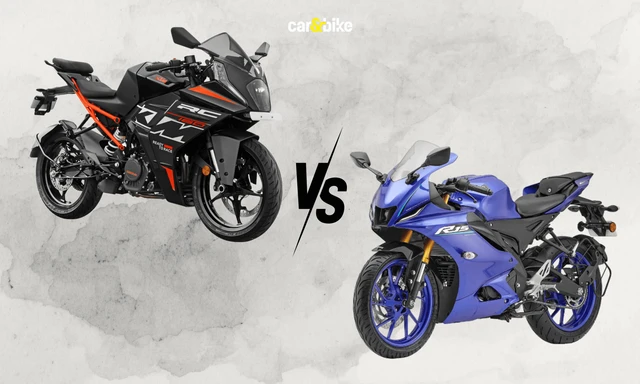 Jafar Rizvi | Jan 9, 2026KTM RC 160 vs Yamaha R15: Specifications, Features, Prices ComparedKTM’s new RC 160 goes head-to-head with the Yamaha R15 in the entry-level sportbike category. Here is how the two fare on paper.1 min read
Jafar Rizvi | Jan 9, 2026KTM RC 160 vs Yamaha R15: Specifications, Features, Prices ComparedKTM’s new RC 160 goes head-to-head with the Yamaha R15 in the entry-level sportbike category. Here is how the two fare on paper.1 min read Amaan Ahmed | Jan 9, 2026Suzuki E-Access Launched At Rs 1.88 Lakh; LFP Battery Promises 95 KM RangeOriginally confirmed for a June 2025 launch, Suzuki's first electric two-wheeler for India has finally arrived almost a year after making its global debut at Auto Expo 2025.3 mins read
Amaan Ahmed | Jan 9, 2026Suzuki E-Access Launched At Rs 1.88 Lakh; LFP Battery Promises 95 KM RangeOriginally confirmed for a June 2025 launch, Suzuki's first electric two-wheeler for India has finally arrived almost a year after making its global debut at Auto Expo 2025.3 mins read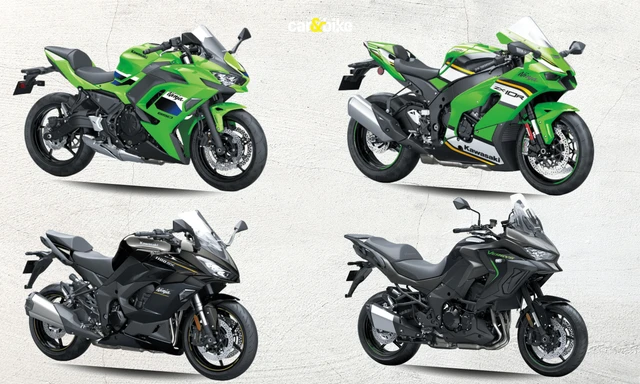 car&bike Team | Jan 9, 2026Kawasaki Ninja, Versys Models Offered With Discounts Of Up To Rs 2.50 LakhThe Ninja ZX-10R is offered with maximum benefits, followed by the Ninja 1100SX and Versys 1100.1 min read
car&bike Team | Jan 9, 2026Kawasaki Ninja, Versys Models Offered With Discounts Of Up To Rs 2.50 LakhThe Ninja ZX-10R is offered with maximum benefits, followed by the Ninja 1100SX and Versys 1100.1 min read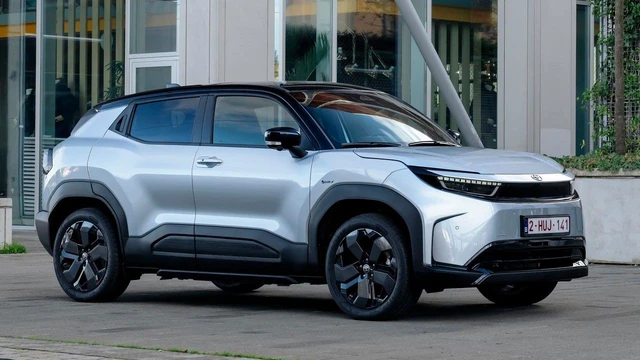 Bilal Firfiray | Jan 9, 2026Toyota Urban Cruiser EV: What To ExpectToyota will be introducing an all-electric vehicle for the first time in India. It is the Toyota-badged version of the soon-to-be-launched Maruti Suzuki e-Vitara, and here’s everything we expect from it.1 min read
Bilal Firfiray | Jan 9, 2026Toyota Urban Cruiser EV: What To ExpectToyota will be introducing an all-electric vehicle for the first time in India. It is the Toyota-badged version of the soon-to-be-launched Maruti Suzuki e-Vitara, and here’s everything we expect from it.1 min read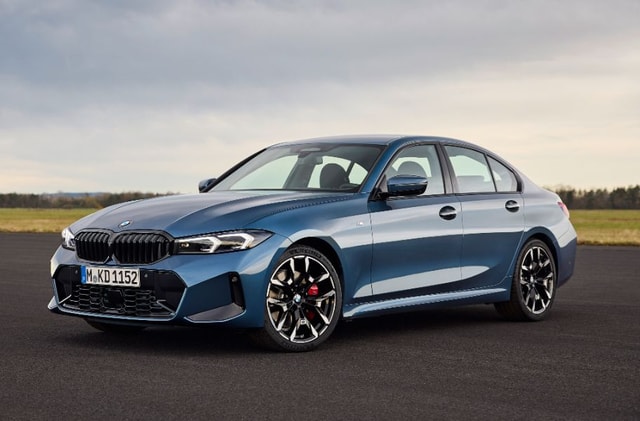 Jaiveer Mehra | Jan 8, 2026Auto Sales 2025: BMW Group India Sold 18,001 Cars And SUVs, Its Highest Ever Yearly FigureCarmaker delivered 17,271 units under the BMW brand and 730 units under Mini.1 min read
Jaiveer Mehra | Jan 8, 2026Auto Sales 2025: BMW Group India Sold 18,001 Cars And SUVs, Its Highest Ever Yearly FigureCarmaker delivered 17,271 units under the BMW brand and 730 units under Mini.1 min read car&bike Team | Jan 8, 2026Suzuki Motorcycle India Achieves 10 Million Production MilestoneThe 10 millionth unit was an Access 125 scooter, which rolled out from Suzuki’s Gurugram plant.1 min read
car&bike Team | Jan 8, 2026Suzuki Motorcycle India Achieves 10 Million Production MilestoneThe 10 millionth unit was an Access 125 scooter, which rolled out from Suzuki’s Gurugram plant.1 min read
 Bilal Firfiray | Jan 9, 2026Toyota Urban Cruiser Hyryder: 10,000 km Long-Term ReviewAfter spending over three months and 10,000 km with the Toyota Urban Cruiser Hyryder Hybrid, we were impressed by its real-world mileage, seamless hybrid, practical comfort, and Toyota reliability. Is it the best C-SUV then?5 mins read
Bilal Firfiray | Jan 9, 2026Toyota Urban Cruiser Hyryder: 10,000 km Long-Term ReviewAfter spending over three months and 10,000 km with the Toyota Urban Cruiser Hyryder Hybrid, we were impressed by its real-world mileage, seamless hybrid, practical comfort, and Toyota reliability. Is it the best C-SUV then?5 mins read Seshan Vijayraghvan | Jan 8, 20262026 Mahindra XUV 7XO Review: Big On Tech, Bigger On ComfortThe new Mahindra XUV 7XO is flashier, feature packed, and comes with more advanced tech. But are the changes just incremental or actually substantial?1 min read
Seshan Vijayraghvan | Jan 8, 20262026 Mahindra XUV 7XO Review: Big On Tech, Bigger On ComfortThe new Mahindra XUV 7XO is flashier, feature packed, and comes with more advanced tech. But are the changes just incremental or actually substantial?1 min read Preetam Bora | Jan 10, 2026Simple One Gen 2 First Ride Review: 265 km Claimed Range!The Gen 2 model of Simple Energy’s first electric scooter gets a fair few updates, including new features, tech, more range and lighter weight. We spent a couple of hours with the Simple One Gen 2 to find out if it manages to impress.6 mins read
Preetam Bora | Jan 10, 2026Simple One Gen 2 First Ride Review: 265 km Claimed Range!The Gen 2 model of Simple Energy’s first electric scooter gets a fair few updates, including new features, tech, more range and lighter weight. We spent a couple of hours with the Simple One Gen 2 to find out if it manages to impress.6 mins read Amaan Ahmed | Jan 3, 2026VLF Mobster 135 300 KM Review: Fun But FlawedA 125 cc scooter with Italian design and Chinese genes is a rare combination, and while some may be tempted to dismiss it because of its origins, the VLF Mobster shows 125s can also be exciting – but not without compromises.11 mins read
Amaan Ahmed | Jan 3, 2026VLF Mobster 135 300 KM Review: Fun But FlawedA 125 cc scooter with Italian design and Chinese genes is a rare combination, and while some may be tempted to dismiss it because of its origins, the VLF Mobster shows 125s can also be exciting – but not without compromises.11 mins read Preetam Bora | Dec 30, 2025TVS Orbiter Review: Real-World Performance and Range TestedThe TVS Orbiter is a promising electric scooter promising decent range, practicality and pricing. But is there any reason to avoid it? We spent a few days getting to know it better.9 mins read
Preetam Bora | Dec 30, 2025TVS Orbiter Review: Real-World Performance and Range TestedThe TVS Orbiter is a promising electric scooter promising decent range, practicality and pricing. But is there any reason to avoid it? We spent a few days getting to know it better.9 mins read






















































































































